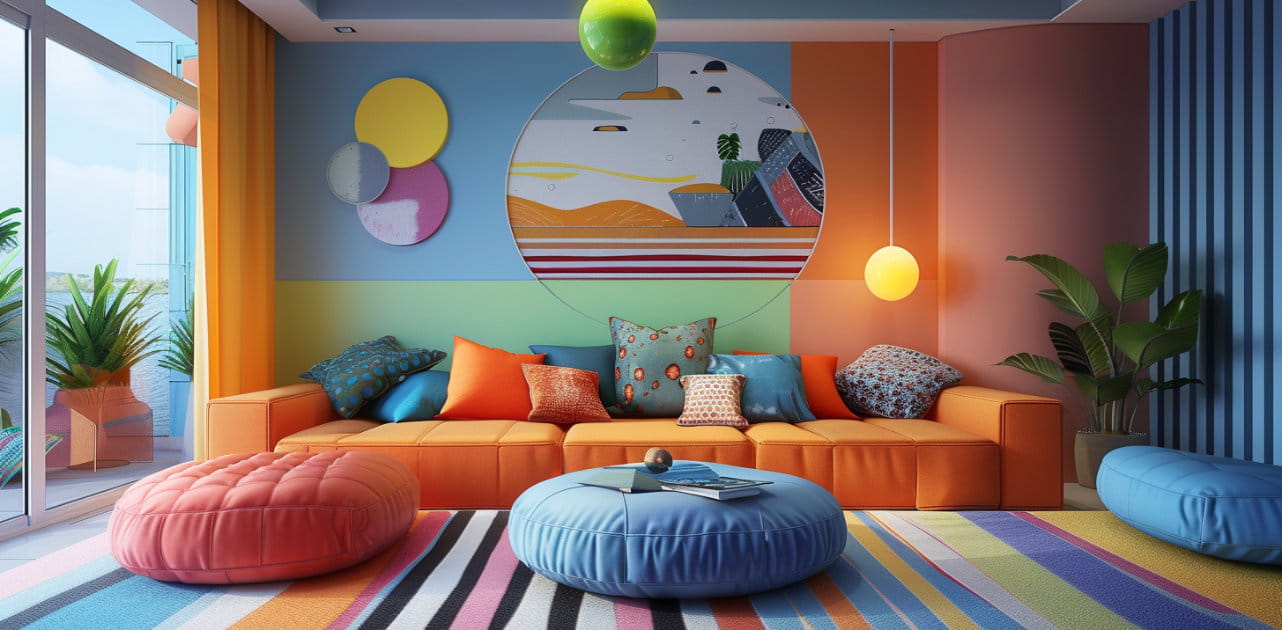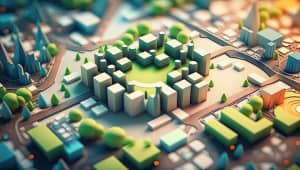At Evermotion, our commitment to pushing the boundaries of CG artistry is reflected in our dedication to providing resources that cater to a wide range of skills and applications. This guide aims to help enthusiasts learn advanced 3D modeling techniques - from the basics to the use of sophisticated tools. The goal is to comprehensively understand what it takes to create stunning, static 3D models that can stand out in the digital landscape.
Essentials of 3D Modeling
Embarking on 3D modeling requires understanding foundational principles, such as learning a new language in digital creation. For those at the starting line, engaging with Unity 3D tutorials and 3ds Max animation tutorials for beginners offers more than just a basic introduction; it lays a comprehensive groundwork for all that comes next. These resources meticulously cover essential modeling concepts, from the initial steps of mesh creation to the more nuanced skills of texture mapping and basic lighting. They serve as the artist's initial toolkit, enabling the creation of simple yet effective models. This foundational knowledge is essential as it prepares artists for the complexities of more advanced projects, ensuring they have a solid base upon which to build. It’s about setting a strong footing in the vast, ever-expanding field of computer graphics (CG), where the only limit is one's imagination. Mastering these essential skills involves technical prowess and opening doors to creative freedom in the digital landscape.
Advanced Tools and Techniques
Progressing beyond the basics and exploring advanced modeling tools and techniques becomes a journey of discovery and refinement for 3D modelers. While 3ds Max animation tutorial content is traditionally tailored for animators, it harbors deep insights into complex modeling techniques that can significantly enhance the quality and detail of static models. These tutorials delve into sophisticated aspects of 3D modeling, such as advanced mesh manipulation, precise texture detailing, and complex scene setups. Similarly, 3D Max Corona tutorial content unveils the possibilities of high-end rendering solutions, demonstrating how refined lighting and material effects can breathe life into static models. This method adds realistic and deep layers to models' visual narrative without crossing the boundaries of animation. By embracing these advanced tools, artists can push the boundaries of what’s possible, transforming simple models into intricate works of art that captivate and intrigue.
Refining Your Art with Corona
While primarily aimed at animators, the Corona animation tutorial content provides a treasure trove of knowledge for achieving photorealistic renders in static models. In synergy with 3D Max, the Corona renderer equips artists with a comprehensive toolkit for enhancing their creations with unparalleled lifelike quality. This involves a comprehensive analysis of texture detail, lighting subtleties, and global illumination to enhance the realism of CG environments. Through these tutorials, artists learn to manipulate light and shadow to mimic the natural world, bringing a sense of depth and authenticity to their static models. Creating remarkably real designs requires precision and patience, blurring digital and tangible boundaries.
Unity in 3D Modeling
Integrating Unity tutorials 3D into one’s modeling workflow unveils creative possibilities. While renowned for its prowess in game development, Unity is also a formidable tool for creating and visualizing static 3D models. The platform offers various features for artists to leverage, from real-time rendering capabilities to comprehensive environmental design tools. This enables creators to sculpt and texture their models and place them within immersive environments that can be interacted with in real time. It’s a dynamic way to refine models, offering instant feedback on how lighting, atmosphere, and context influence the appearance and perception of static 3D creations. Unity offers a sandbox of innovation for artists looking to push the envelope in environmental design and model visualization, where static models come to life in interactive, real-world scenarios.
Elevating Models with Texturing and Lighting
The mastery of texturing and lighting is evident in an artist's transition from basic modeling to crafting detailed and engaging pieces. Detailed guides found in 3D Max Corona tutorials illuminate the path to applying realistic textures and simulating natural lighting, two pivotal elements that drastically influence a model’s mood and authenticity. This process is both an art and a science, requiring a nuanced understanding of how materials interact with light and how these interactions can be replicated within a digital environment. It's about adding layers of complexity to models, each texture and light source enriching the narrative woven by the artist. By mastering these advanced techniques, creators elevate their models from digital constructs to compelling representations of their artistic vision, imbued with a sense of life and realism.
Challenges and Solutions in Static Modeling
Focusing on static models presents a unique set of challenges, requiring a nuanced approach to modeling that emphasizes detail, realism, and context. Techniques gleaned from Unity 3D tutorials and Corona animation tutorials become instrumental in navigating these challenges. They provide strategies for achieving realism in environments where motion is absent, teaching artists how to create intricate and visually stunning models. This requires a delicate balance between technical expertise and creative vision to create models that accurately depict lifelike details and textures. Adaptability is key, as these tutorials offer insights into rendering techniques that enhance the static nature of models, making them appear dynamic and full of life. For example, subtle lighting changes can suggest different times of day. At the same time, detailed texturing can bring out the character of materials, from the roughness of aged wood to the sleekness of polished metal. Artists learn to pay close attention to the interplay of light and shadow, the nuances of color, and the importance of scale and proportion, all crucial in creating static models that captivate and engage the viewer. By embracing these techniques, artists can overcome the inherent limitations of static modeling, producing visually appealing works rich in narrative and context inviting viewers to immerse themselves in the created environments.
The journey from basic techniques to advanced 3D visualization is marked by growth, experimentation, and a relentless pursuit of creativity. At Evermotion, we stand committed to supporting artists at every step of their journey, offering resources that inspire and enable them to explore the full potential of their artistry. As creators navigate the complex process of using foundational modeling techniques and mastering the art of 3D visualization, they can create static models that stimulate the imagination and set new standards in digital art. In doing so, they redefine the boundaries of what is possible, showcasing the incredible power of 3D modeling to bring ideas to life in breathtaking detail and realism.
 Removing LUTs from Textures for better resultsRemove the LUT from a specific texture in order to get perfect looking textures in your render.
Removing LUTs from Textures for better resultsRemove the LUT from a specific texture in order to get perfect looking textures in your render. Chaos Corona 12 ReleasedWhat new features landed in Corona 12?
Chaos Corona 12 ReleasedWhat new features landed in Corona 12? OCIO Color Management in 3ds Max 2024Color management is crucial for full control over your renders.
OCIO Color Management in 3ds Max 2024Color management is crucial for full control over your renders. A look at 3dsMax Video SequencerDo you know that you can edit your videos directly in 3ds Max? Renderram is showing some functionalities of 3ds Max's built in sequencer.
A look at 3dsMax Video SequencerDo you know that you can edit your videos directly in 3ds Max? Renderram is showing some functionalities of 3ds Max's built in sequencer. FStorm Denoiser is here - First ImpressionsFirst look at new denoising tool in FStorm that will clean-up your renders.
FStorm Denoiser is here - First ImpressionsFirst look at new denoising tool in FStorm that will clean-up your renders. Unreal Engine 5.4: Nanite Tessellation in 10 MinutesThis tutorial takes you through creating a stunning desert scene, complete with realistic tire tracks, using Nanite for landscapes, Gaea for terrain sculpting, and an awesome slope masking auto material.
Unreal Engine 5.4: Nanite Tessellation in 10 MinutesThis tutorial takes you through creating a stunning desert scene, complete with realistic tire tracks, using Nanite for landscapes, Gaea for terrain sculpting, and an awesome slope masking auto material.Customer zone
Your special offers
Your orders
Edit account
Add project
Liked projects
View your artist profile























COMMENTS